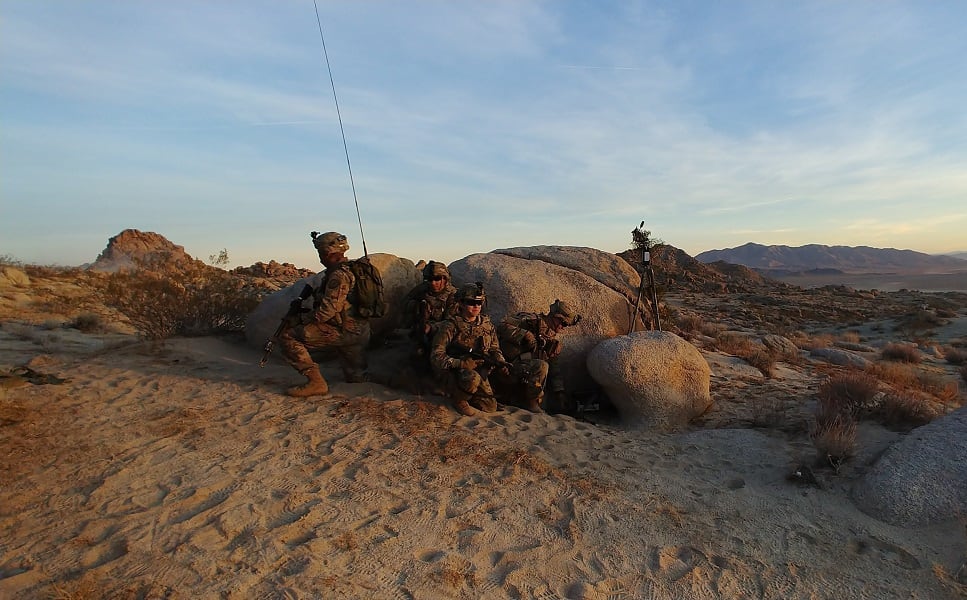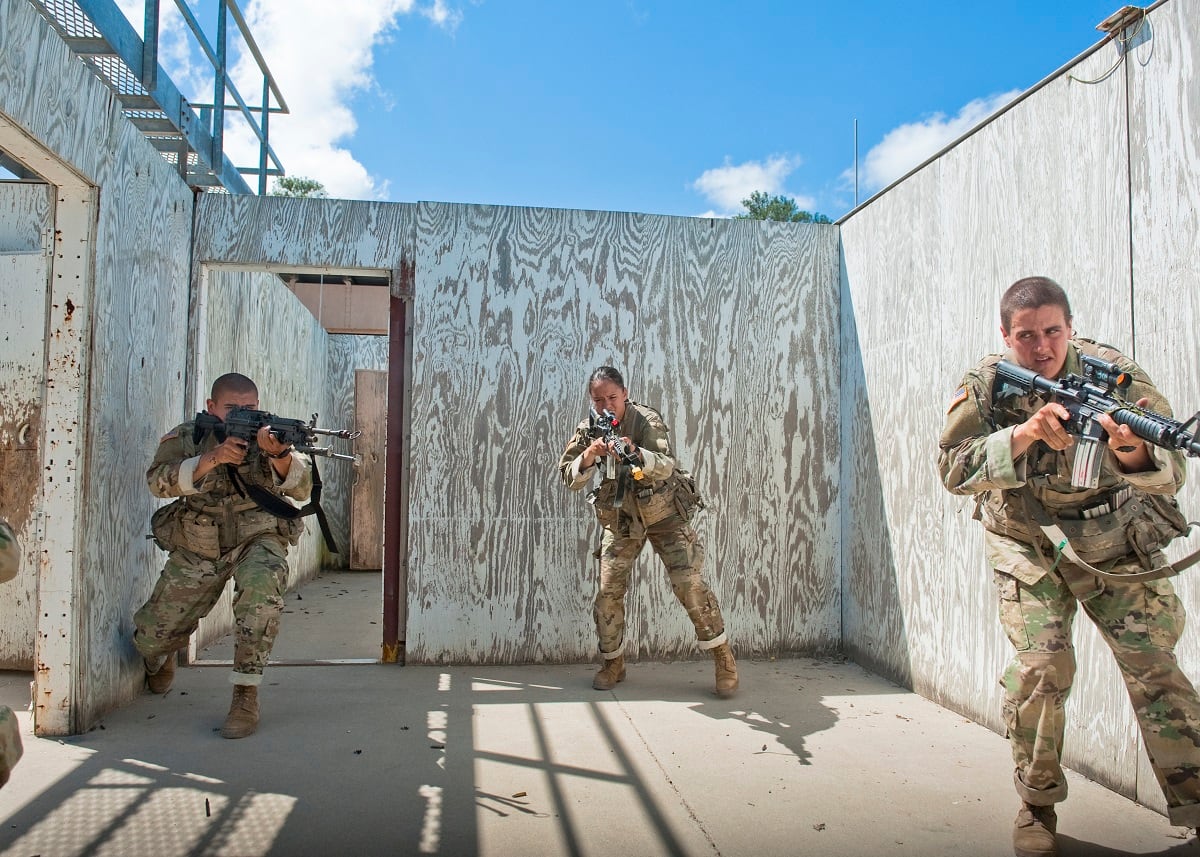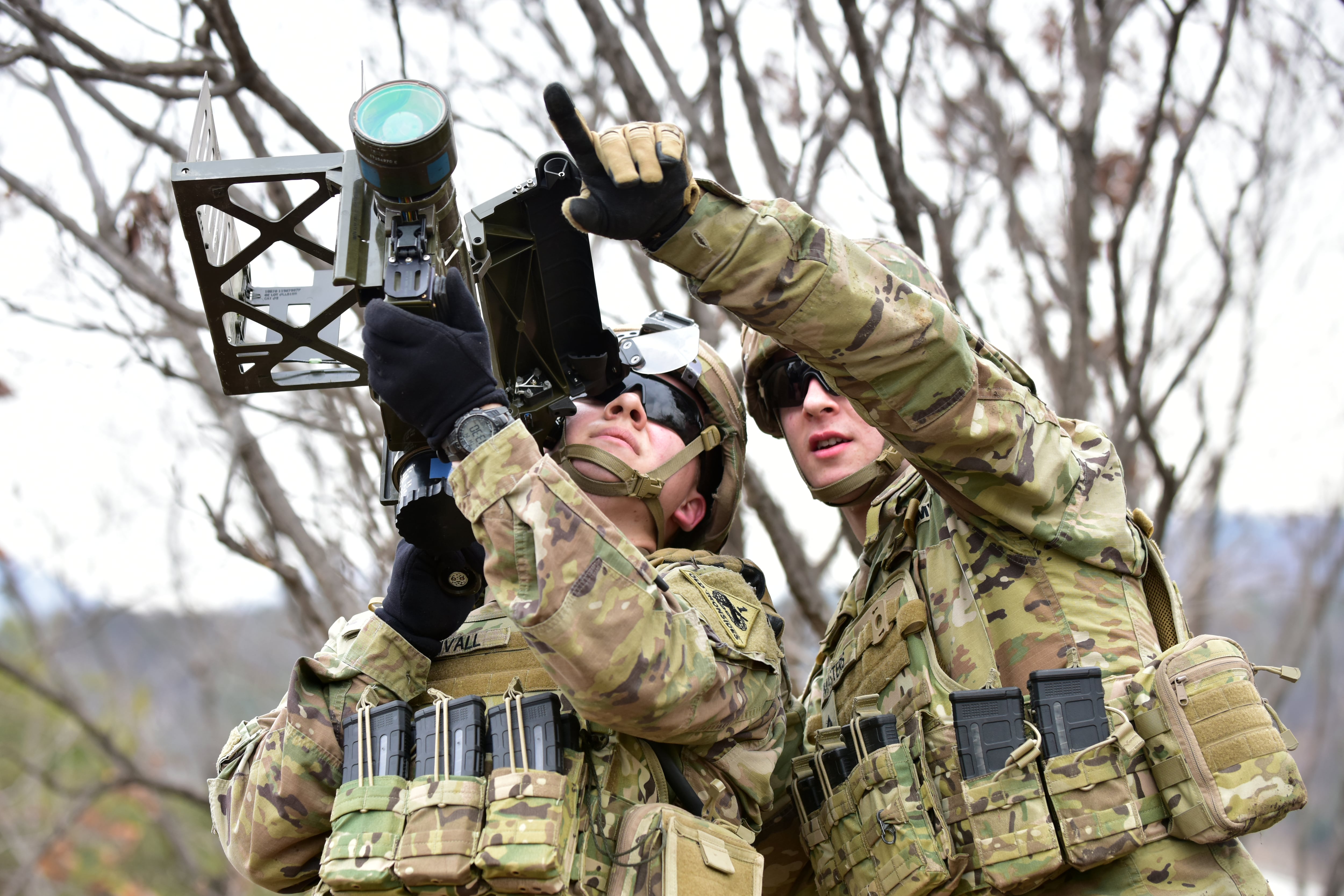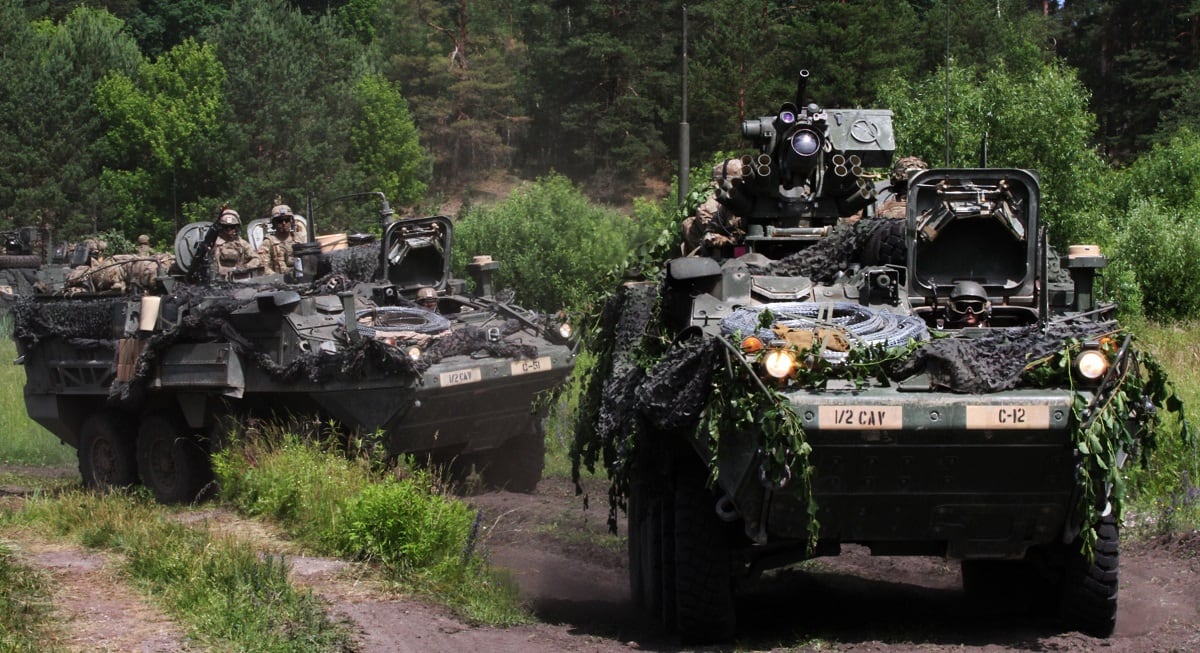As the top Army leadership changes and the newcomers grow accustomed to their roles, there remains much to be done to prepare the Army’s brigade combat teams and individual soldiers for potentially the next big fight.
The wheels set in motion over the past four years to address what outgoing Chief of Staff Gen. Mark Milley saw as a "fundamental change in the character of war” are still turning, and Milley’s replacement appears set on maintaining that momentum.
When Milley took over four years ago, lawmakers, think tankers and soldiers told him they needed to retool and overhaul the institution to modernize the force.
“Everyone said that there’s no way in four years you’re going to be able to actually produce the new equipment and the doctrine in the organizations. That won’t happen in your four years as chief,” Milley told Army Times in an interview before the Aug. 9 change of command ceremony.
“And they’re right," Milley added. "They said the most you can do is really crank on readiness to get the current force to the highest level of readiness that you can do. That’s what we’ve been doing.”
Currently, about 50 percent of the Army’s 58 brigade combat teams across the force are at the highest levels of readiness. That’s up from about 33 percent four years ago, but the Army’s goal is double that.
“We’re not where we need to be," Milley said. "I would still like to shoot for 66 percent on a day-to-day basis and I think it’s a realistic goal. We’ve had good budgets so it’s dependent upon two primary endpoints — money and time.”
“If things stay good on the budget and stay good on op tempo, we’ll reach that 66 percent in the next, I don’t know, call it 24 to 36 months.”
Milley is taking over as the chairman of the Joint Chiefs of Staff, so meeting that goal now falls to Gen. James C. McConville, the Army’s new top officer.
At the same time, Sergeant Major of the Army Daniel A. Dailey has also stepped down, retiring from the service and handing the reins to Command Sgt. Maj. Michael A. Grinston, who is now the Army’s 16th SMA. A decorated artilleryman, Grinston is coming from the senior enlisted role with Army Forces Command, the provider of campaign-ready land forces to combatant commanders.
That experience will help Grinston as the Army is still actively engaged in combat in the Central Command area of responsibility.
Dwelling on deployments
“When I became the chief, we were really struggling with maintaining the operational readiness rates, the fully mission capable rates of the various vehicle fleets, both air and ground,” Milley said. “Today, that’s much better. And the big difference is the incredible work that Army Material Command has done and the units have done in terms of maintaining the equipment, but really significant is getting a flow of spare parts.”
Traditionally, readiness is measured by training and equipping of the force. But for a people-based organization like the Army, “the long pole in the tent for readiness” involves manning, according to Milley.
“So manning is the real key thing to maintaining high levels of readiness,” Milley said. Over the past several chiefs, non-deployable rates for soldiers hit highs of 16 percent.
“Doesn’t sound like much, but out of a million-strong Army, that’s a 160,000 people who can’t get on a plane to go," Lt. Gen. Thomas Seamands, Army deputy chief of staff for personnel, said at a June event in Washington, D.C.
Last year, the new “deploy or get out” policy made deployability a condition of employment. It said that if a service member is non-deployable for a period of 12 months or more, they’re subject to being separated from the armed forces. That policy has dropped the non-deployable rate to roughly 5-6 percent on average across most Army units, according to Milley.
And although the wars in the Middle East are ongoing, the deployment-to-dwell ratios over the past year and a half show a significant decrease in the toll those conflicts take on the force.
Army Special Forces, for instance, now has a 1:1.9 ratio, meaning for whatever amount of time they’re deployed, the soldiers spend almost double that at home station.
Going back to 2011, Army Special Operations Command’s most well-rested forces were getting a dwell ratio of only one-to-one, according to the service. Other oft-utilized soldiers are looking better rested these days as well.
Terminal High Altitude Area Defense and Patriot missile battery troops have a 1:5 and a 1:1.8 dwell ratio, respectively. Those numbers don’t count forward-based assets at places like South Korea or in Europe.
For non-forward-based infantry brigade combat teams, which have dealt the most with the Afghanistan and Iraq missions, the dwell ratio stands at 1:2.3. When forward-based IBCTs are included, the number jumps to 1:3.7. And Army Guard IBCTs have a 1:5 dwell ratio.

“Special operations have a very high ops tempo. And recently, I think you’re looking at, we’ll call it the last 24 months, the majority of casualties killed and wounded have been special operation forces,” Milley said. “If you include the forces that are working with them, the conventional forces, then that would account for all the causalities.”
Those deaths are mostly happening in Afghanistan, a war that is edging close to being two decades old. The conflict is nowhere near as costly as the surge years circa 2010 and 2011, but it remains an ongoing factor in determining ops tempo and readiness rates.
McConville’s first message to the force echoed many of the same priorities his predecessor has delivered. A career aviator who commanded the 101st Airborne Division, McConville is stepping into Milley’s former job after serving as the vice chief, meaning he’s overseen and assisted with much of what has been done so far to prepare the United States for an era of renewed great power competition.
How big of an Army do you need?
Coming into the role as chief, Milley pushed hard to grow the size of the Army. His team looked at how big the service has historically needed to be to fight the kind of major wars the new National Defense Strategy is focused towards, while still maintaining the campaign momentum underway in the Middle East.
“About 725,000 in 18 divisions in the regular Army was the size of the Army when I was commissioned as a second lieutenant 40 years ago,” Milley said, comparing that force to the much smaller one he inherited as chief and the size that is needed for the new NDS. “If you do the analysis — and we’ve done all kinds of analysis on it — you get a size of the force that is significantly bigger than the low numbers that were being discussed four years ago.”
The service is striving to grow to a 500,000-strong active-duty force by the end of the next decade, and it ended 2019 with 478,000 troops.
But when Milley came in as chief four years ago, there was talk of scaling the Army down to about 420,000 soldiers.
“There were even some people saying take the active-duty regular Army down to 320,” he said. “My predecessor fought hard against that. I fought hard against that. Congress was very supportive. DoD was supportive. White House was supportive when we had the change of administration.”
“I think those conversations are largely over," he added. "They’re never completely over. If the budget were to go into these budget control acts sequestration, then I think those conversations would come back.”
In order to meet the Army’s 500,000-soldier goal, the service has been pushing hard on recruiting. But the Army’s effort fell short last year, missing its recruiting goal by several thousand new troops.
The old plan was to grow the force by 4,000 troops per year. Now, senior leaders are looking at 2,000 additional troops per year as the target.
“We went after 70,000 [recruits] last year. That’s big numbers," the outgoing SMA, Dailey, told Army Times. "We went after 68,000 this year. That’s big numbers. These are like 2007, 2009 numbers when we were growing the Army in rapid scale and in the heat of combat in both Iraq and Afghanistan.”

This year, the Army is on track to bring 68,000 soldiers into the active force, about 15,000 into the Reserve, and 39,000 into the Guard, according to officials.
But with a booming economy and historically low unemployment rates, potential recruits aren’t clamoring to join up as much as past years. By focusing on 22 major cities, such as Chicago, Denver and Los Angeles, and dialing into old or forgotten markets, the Army says it’s found a way to tap into more potential soldiers without resorting to waivers like it has in past years.
Part of that also involved taking the recruiting mission this year and making it an Army-wide initiative and not just one relegated to Recruiting Command, Dailey said.
“The environment in America changes every day,” Dailey said. “The Amazons and Walmarts will come replace you. So it made us realize that we’ve got to change the way we market. We’ve got to find out where the markets are. We’ve got to get back into some markets. We’ve got to create new markets.”
Army leaders have made headway with city and school officials, staged events and even put up an Army team for E-Sports competitions to get into the gaming market.
The service also relocated its marketing division from Arlington, Virginia, to Chicago, where traditionally some of the largest marketing firms in America reside.
“If you want to play in somebody’s backyard, you’ve got to go to their backyard. You can’t live down the street and play baseball with everybody else,” Dailey said. “That’s why Army Futures Command went down to Austin, [Texas].”
Modernizing a maneuver force
That new Austin-based four-star command is a cornerstone of the Army’s modernization initiative. The command is designed to streamline and speed up the acquisition process, helping companies bend metal and get new equipment to troops faster.
“We determined that there was too much bureaucracy, too much overheard. It wasn’t streamlined,” Milley said. “There was no unity of command, no unity of effort. Priorities weren’t straight, clear and being adhered to. Resources weren’t piled in there. So we had to overhaul that whole thing. One of the things it led to was Army Futures Command which you saw open its doors a year ago.”
Although the command hasn’t actually produced anything yet, it has set up its modernization priorities: long-range precision fires, next-generation combat vehicles, future vertical lift platforms, a mobile and expeditionary Army network, air missile defense capabilities and soldier lethality. Underneath each of those are dozens of specific programs.
Those priorities are unlikely to change during McConville’s tenure.
“There’s a lot of people who’ve tried. But no," Milley said. “I mean the whole point of priorities is to keep them narrowly focused.”
The priorities were derived from how the U.S. Army fights and where the service has gaps. “The American way of war, so to speak,” Milley said, is through “maneuver warfare.”

“A lot of people think that we are an attrition-based force. We are not. We are a maneuver force. We highly value maneuver.”
Maneuver is the combination of fires and strategic and tactical movement. The Army’s strategic movement is largely accomplished through the Air Force and Navy, so the Army gets to focus mostly on the tactical part.
“That’s why the very first priority is to reinvigorate fires and specifically we saw a gap in long-range precision fires,” Milley said. “We used to have an incredible capability with artillery and we ripped that apart over the last 20 years in order to convert a lot of artillery units and infantry units and so on.”
Then there’s the tactical movement portion.
“Our rotary aircraft and our ground vehicles are very old. The M1 [Abrams] tank, for example, was brought into service when I was commissioned as a second lieutenant 40 years ago," Milley said.
So the service needs new tracked vehicles and lift platforms. Tying it all together is supposed to be a sophisticated information sharing network that can withstand the cyber attacks of future wars.

But none of that matters if you can’t defend your soldiers from the missile attacks and rotary- and fixed-wing aircraft that a peer competitor would field. That means the service needed to reinvigorate its missile defense capability.
Theater-level assets, like THAAD and the Patriot batteries, still exist. But the Army let unit-level air defenses wither over the past two decades.
“We as an Army became very, very comfortable with being protected by the U.S. Air Force,” Milley said. “And the U.S. Air Force has swept the skies very quickly ... That won’t hold true if you’re talking about China or Russia.”
The last priority is getting new gear to soldiers, including new rifles, night vision optics, body armor and even advanced simulators to offer realistic combat training for everyone from the dismounted soldier to a tank commander.
“We already do it with pilots. We spend you know $10 million or something like that to train an F16, a F35 pilot,” Milley said. “Well we spend $10,000 a year to train a rifle squad. So we can do better than that as a nation. And the synthetic training environment offers us an opportunity to do that.”
“Again, we’re a soldier centric force," he added. "We’re a labor centric force. Not necessarily platform centric.”
Kyle Rempfer was an editor and reporter who has covered combat operations, criminal cases, foreign military assistance and training accidents. Before entering journalism, Kyle served in U.S. Air Force Special Tactics and deployed in 2014 to Paktika Province, Afghanistan, and Baghdad, Iraq.




